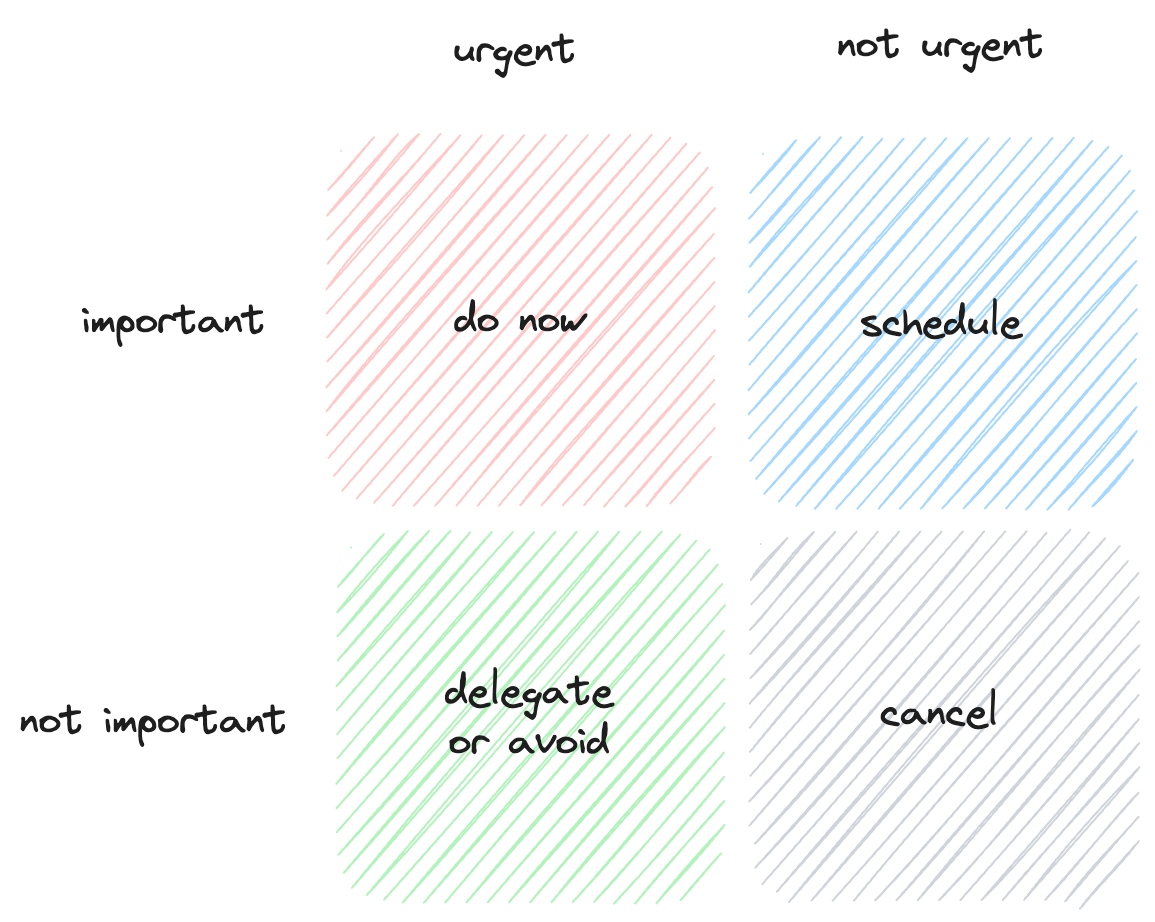Todo Lists II: The Eisenhower Matrix
Posted on Fri 19 January 2024 in general

In a previous article I discussed the power of todo lists and their use in organising your tasks. I have a confession: for a long time I didn't use task lists. This is because of some practical issues which plagued me as a user of those tools. And when I reached for more complex tools like the kanban or the priority matrix, they normally made things worse.
The first problem with a todo list is its length. A todo list with more than 15 or so elements becomes intimidating and you grow to dread opening up the document. What's even worse is when you try to re-order the list: should I pay my taxes first, or hang the laundry? Is it more essential for me to add this new feature, or should I fix the problems with the last one I implemented? In other words, what heuristics am I using to decide what happens first? Is the urgency of a task more important, or its impact on my life?
One possible answer to this is provided by the Eisenhower Matrix. This strategy was invented and used by Dwight D. Eisenhower, 34th President of the USA and Supreme Commander of Allied Forces in Europe in World War II.
Eisenhower's strategy for organising todo lists is as follows: for each task, decide if it's urgent or non-urgent. Decide if it's important or not important. Then, treat them as follows:
- Urgent and important: deal with these as soon as possible
- Important, but not urgent: schedule a time to deal with these
- Urgent, but not important: avoid or delegate to others
- Neither urgent nor important: don't do these
 A visual representation of the Eisenhower Matrix.
A visual representation of the Eisenhower Matrix.
These are relative to your perspective and to other tasks you're currently dealing with. This means that your matrix is tailored to you, like the best productivity tools.
A couple of nice features of the Eisenhower matrix are:
- It only defines 4 priorities, one of them being "cancel". This means that you run little risk of falling into "priority hell", where every task has its own priority level. It also makes it easier to use with most software tools.
- It can be used as a set of sections on a single vertical todo list. This is helpful if you use a plain text editor like Obsidian, LogSeq or Vim as your main working environment.
That said, while the Eisenhower matrix can be helpful in pruning and ordering a set of tasks, it ultimately just breaks them into 3 sections and a trashcan. This means that you still have a problem with task overload, albeit your list can be a bit longer (30-45 items).
The normal addendum to the Eisenhower matrix is to limit each sub-list to no more than 10 items. If you're the POTUS you'll have people to manage your diary and delegate tasks to. If you're not, you might prefer to try strategies like timeboxing to limit the scope of your tasks as much as possible. As a last resort, you can split your task list into several smaller lists, but this often leads to more confusion.
In my experience, the Eisenhower Matrix (and task lists in general) are helpful in situations where you're compromised: whether that's because you have an overwhelming amount of tasks, because you haven't been sleeping well, or because you've just broken up with a partner. When you're in flow, you feel in control without extra tools, and so task lists feel like a burden to maintain.
As always, then, focus on the overall solution and don't feel constrained by your tools.